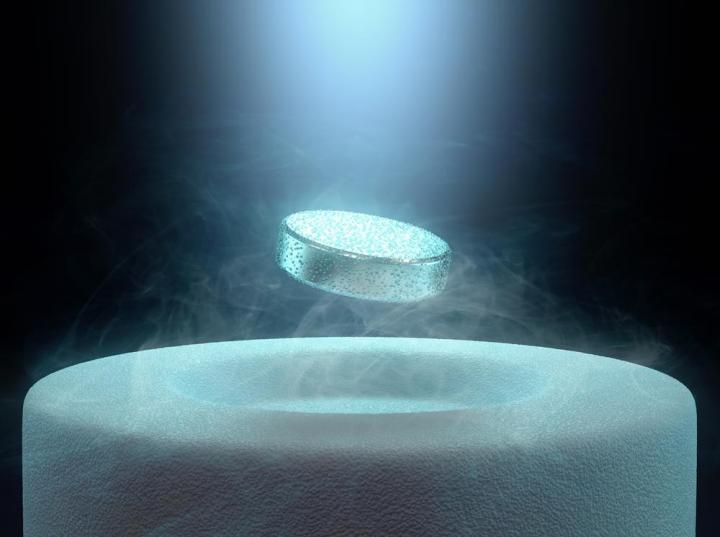
But scientists are making progress. According to a study recently published in Nature, a group of researchers at the Max Planck Institute for Chemistry in Mainz, Germany successfully created a material that exhibits superconductivity at -70 degrees Celsius. That’s still pretty chilly by most people’s standards, but it’s also a new record for superconductive materials. The previous record was a full 40 degrees colder at -110 degrees Celsius.
To achieve such groundbreakingly high temperatures, the researchers had to develop an exotic new material — sort of. They used a naturally occurring compound known as hydrogen sulphide (H2S) to make the superconductive material, but the thing is, they didn’t use it in its natural state. Normally, H2S is a colorless gas that smells like rotten eggs; but when you chill it and hold it under immense pressure, it can be transformed into a solid metal — which is exactly what the researchers did.
Pressurizing hydrogen sulphide to this point was quite a feat in itself. In order to transform it into a solid, the researchers had to use a crazy contraption known as a “diamond anvil” to squeeze and compress a tiny amount of the gas to over 1.6 million times atmospheric pressure. Only then did the material begin to exhibit superconductive qualities.
Scientists still aren’t sure why hydrogen sulphide makes such a good superconductor. Right now the best theory seems to be that the phenomenon has something to do with the material’s hydrogen ions, which help electrons form so-called Cooper pairs – a configuration that allows current to travel more swiftly through a material.
It may not be the room-temperature “holy grail” superconductor that scientists have been looking for, but even so, superconductive H2S is a huge step forward for physics.
Editors' Recommendations
- Steam Deck 2? This leak suggests Valve is working on new hardware
- Lenovo’s new Legion gaming mice are simple yet affordable
- Sony acquires Demon’s Souls developer, which already has new game in the works
- Nintendo confirms it’s working on a new console
- How does a blast wave work? The physics behind the phenomenon




